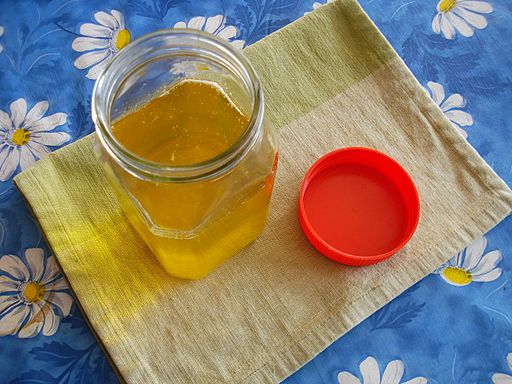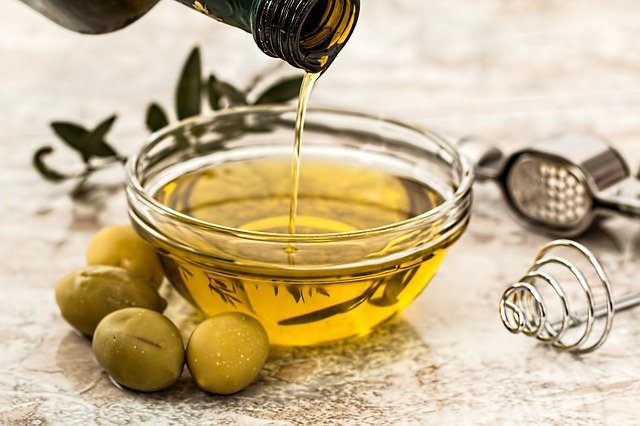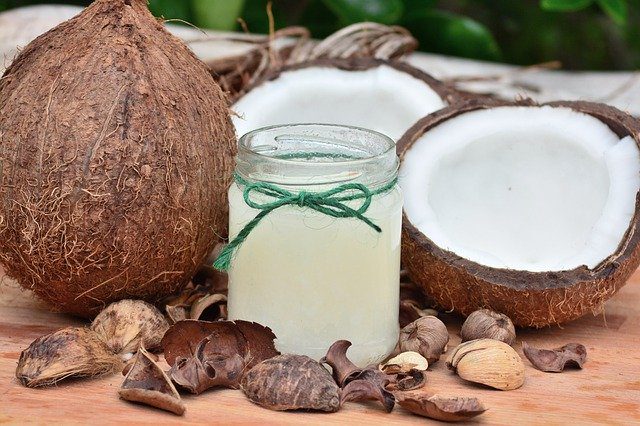It’s incredibly hard to choose the right kind of cooking oil, one of the most important cooking mediums in the kitchen. And given the massive influx of brands that tout more than a dozen health benefits, selecting the right oil can be tricky. A particular oil which is excellent for dressing or baking, might not be a good choice for deep frying and so on. And then there’s our health to consider. How do we know which is the best oil for cooking? Most regions in India stick to a certain kind of oil – mustard oil in Bengal, coconut oil in Kerala, and so on. So let’s delve into the world of cooking mediums and find one that’s just right – not only for the food we cook but also for the benefit of our health.
Every oil is a mixture of fatty acids such as monosaturated fats(MSF), Polysaturated Fat (PSF), and Saturated Fat. The proportion of these acids concludes whether an edible oil is healthy to consume or not.
Monosaturated Fats
Monosaturated fats are referred to as ‘healthy fats’ that increase the good cholesterol and lowers the bad cholesterol in the body. These oils are liquid at room temperature but may solidify if exposed to low temperatures. Few good examples of oils rich in MSF are olive, avocado, and canola oil.
Polyunsaturated Fats
Polyunsaturated fats are the other type of unsaturated fat that enhances heart health when compared to saturated fats.
Saturated Fats
Saturated fats are generally found in animal products such as dairy or meat but some plants like the coconut and palm also contain it. Oils that are high in saturated fat are solid at room temperature so it’s recommended to have them in moderate quantities. According to the US government guidelines, we shouldn’t consume more than 10% of the total calories we consume every day.
Omega Fatty Acids
There are three types of Omega fatty acids – Omega-3, Omega-6, and Omega-9 – that are found in cooking oils but what we need is an ideal balance for overall health. Omega-3 is crucial for our heart, liver, brain, eyes, and skin. Omega-6 is not considered as good because its high intake may increase your blood pressure and can lead to heart diseases. Omega-9 helps in the elimination of plaque build- up in the arteries. Omega-3 and Omega-6 can’t be made by the body but our body can produce Omega-9 fatty acids.
Table of Contents
What’s The Best Cooking Oil?
1. Ghee Or Clarified Butter
The aroma and taste of ghee are unbeatable. Ghee or clarified butter is natural cooking oil. Apart from its taste and versatility, it’s a storehouse of Omega 3 and Omega 9 fatty acids as well as Vitamin A, D, E and K
It has a higher smoke point of 485°F which is higher than most of the oils and suits the high heat heat of Indian cooking.
Ghee absorbs harmful toxins and expels them from the body. Organic butter from pastured cows is the highest natural source of conjugated linoleic acid (CLA) which is next to impossible to find in other edible oils. It’s great for dry skin and hair. Generally, ghee is not considered safe for the heart due to its high amount of saturated fat but it’s not that harmful as it appears. Recommended Dietary Allowances (RDA) suggests that not more than 10 grams of our daily intake of calories should come from saturated fats. Therefore, moderation is key. According to a study experts found a small or neutral link between the consumption of ghee and heart disease. (1)

Image credit : Wikimedia Commons
Although ghee is one of the best cooking oils for Indian food and can be easily made at home, it’s important to know that it’s saturate fat after all and excessive quantities of it can lead to heath problems.
2. Mustard Oil
It’s strange that mustard oil, which has been used in our country for generations, is often debated upon as far as its benefits go. Mustard oil is rich in essential antioxidants as well as monosaturated fat and Polysaturated fat (MUFA and PUFA) Its smoke point is 480°F, which makes it suitable for cooking at high temperatures. It not only enhances the flavor of the food but also prevents heart, muscle, skin, and joint-related diseases. According to a study on edible oils, held in AIIMS and the Shri Ganga Ram Hospital, researchers found that mustard oil can decrease the risk of heart attacks by over 70% (2)
The only drawback in mustard oil is that it lacks the balanced proportion of Omega 3(N6 ) and omega 3 (N3) fatty acids which help in reducing heart problems. It also contains erucic acid which might give heart trouble if consumed in large quantities.
Olive Oil
Olive oil has a special place even in Indian kitchens. It has a low smoke point of 375°F that makes it suitable for low and medium heat cooking. Olive oil contains a good amount of MSF and some PSF fatty acids. It’s a great choice for baking and dressing but you must always look for extra virgin olive oil or cold-pressed olive oil as they are extracted by the pressing method and therefore retain all the essential nutrients without harming its natural aroma. According to NCBI olive oil has plenty of polyphenolic compounds, which contain anti-cancer, anti-inflammatory, and anti-angiogenic properties. (3)

And while it is considered to be one of the best oils available today, its cost, possibilities of adulteration, and general unsuitability with Indian cooking make it slightly limited.
4. Rice Bran Oil
Rice Bran oil is not very old in the market and yet has gained much respect as a healthy cooking medium due to its high volume of unsaturated fat as compared to saturated fat and neutral taste. It’s especially recommended for heart patients because it is less oily, lowers cholesterol and in short, is a heart-healthy oil. Rice bran has a high smoking point of 320°F which is suitable for high heat cooking. It has plenty of Vitamin E, a fat-soluble vitamin, as well as Vitamin K, and it aids in weight loss.
A research suggests that rice Bran may maintain the blood sugar level with improving insulin resistance which is beneficial for type 2 diabetes. (4)
Aside from its heart-healthy features and richness in vital nutrients, high intake of rice bran too has few side effects such as intestinal gas, stomach discomfort, uncertain bowel movements during the initial few weeks.
5. Canola Oil
Canola oil is also considered a healthy cooking oil, extracted from a variety of rapeseed. It has enough quantity of monosaturated fats and a decent amount of polyunsaturated fats. Canola oil is known for its least quantity of saturated fat (only 7%) among all other vegetable oils. It has a high smoking point of 400°F which makes it apt for frying and deep-frying. Canola oil’s Polyunsaturated fatty acids contain 11% alpha-linolenic acid or Omega -3 fatty acids. A study suggests that ALA can be beneficial as it can decrease heart diseases, type 2 diabetes, and risk of fractures. (5)

Image credit : Wikimedia Commons
It has 12% of Reference daily intake of Vitamin E and Vitamin K. Generally, the extraction of canola oil requires chemical processing so cold-pressed canola oil should be preferred to retain flavor and all necessary nutrients.
The only drawback of canola oil is it’s the high level of erucic acid or omega-6 and the it’s excessive use may be toxic to our body.
6. Safflower Oil
Safflower oil has abundant of unsaturated fatty acids and polyunsaturated fatty acids which are good fats. It has a neutral flavor, which goes with several cuisines. Monounsaturated safflower oil has a smoking point that is suitable for high-temperature cooking and Polysaturated safflower oil is an ideal choice for cooking over low heat.
According to a study published in Clinical nutrition, 8 grams of safflower oil improved the blood cholesterol, blood sugar, and inflammation level with type 2 diabetes. (6)
Safflower oil can cause an allergic reaction to those who are allergic to asteroceal and compositae family, which includes daisy, marigold, and many more and it can also interfere with the blood sugar medication.
7. Coconut Oil
Cooking with coconut oil is always on the radar because of the high amount of saturated fats in it. But is that fact correct? Coconut oil has a unique saturated fat that is medium fatty acids (MCFA) which improves lipid circulation in the blood thus increasing the good cholesterol. It has a high smoking point of 350°F, which makes it suitable for high heat cooking such as frying. Coconut oil has a bad reputation because of misinformation or outdated sources. Our body needs some amount of saturated fats for functioning normally. A study says that coconut oil increased the good cholesterol (HDL) without increasing the bad cholesterol (LDL) after giving 50 grams of coconut oil to 91 adults for a month as compared to other dairy oils. (7)

Coconut oil can be the best oil for cooking in India but excess consumption of coconut oil may lead to heart diseases because of its high content of saturated fats so moderation is the key.
8. Peanut Oil
Peanut oil is the most common type of nut oil. It contains a large amount of monosaturated fats or Omega-9 and a high quantity of Omega-6 and a small proportion of palmitic acid. Its flavor can be mildly sweet or strong and nutty, which depends on its extraction method. Unrefined peanut oil can be used for high heat cooking due to its smoking point of 320°F. According to NCBI, It contains Vitamin E, a natural antioxidant that helps in protecting cells from free radicals and heart diseases. (8) The only downside of peanut oil is its high content of Omega-6 or linoleic acid which is not considered very good. A lot of people are also quite allergic to peanuts.
9. Avocado Oil
Avocado oil is widely used in cosmetics due to its high Vitamin E content, which is great for dryness and aging. But it’s also one of the best edible oils available today. It doesn’t have much flavor so it can be used in various dishes. However, avocado oil contains both mono and poly saturated fats, and at 70%, its monosaturated fat content is highest among all other oils, which is also known as omega -9 or oleic acid. Its smoking point is highest among all other cooking oils at 520°F and therefore can be the best choice for deep frying. However, it’s also one of the more expensive oils. Studies have shown that MSF can prevent coronary risk factors such as blood clotting, insulin sensitivity, and vitro LDL susceptibility. (9)The only limitation is its unaffordability due to a high price.
10. Sunflower Oil
Sunflower oil contains 20% of monosaturated fat and only 11% of saturated fat. It has phytochemicals like choline and phenolic acid which makes it healthy for the heart. It’s free from trans fat or cholesterol. Sunflower oil is a versatile oil with a nutty flavor. It has a smoking point of 450° F which goes well with frying. According to a study, 15 healthy adults ate sunflower rich diet for ten weeks had significantly lower blood levels of (LDA) bad cholesterol and triglycerides as compared to those adults, who were on a saturated fat diet. (10)
Even though sunflower oil is an all-purpose oil and promotes heart health but it can increase the blood sugar levels, fasting insulin, and after food blood fats which might develop the risk of atherosclerosis in diabetic people.
Is Refined Oil Good For Cooking?
After discussing the best cooking oil, it’s also necessary to know more about the Worst Oil For Cooking. Generally, vegetable oils are refined for removing its strong odor and stickiness as well to increase its shelf life which is also called ‘purification’. Refined oils are obtained by expellers or solvents with the use of chemicals like hexane. In the refining process, oils are extracted at high temperatures and preservatives are added. They are treated with acids, alkali, and bleach. They are neutralized, filtered, and deodorized. In the whole process, vegetable oils loses its natural flavor and nutrients. Healthy fatty acids are broken and trans fats are formed.
In Conclusion
Baking, sautéing or frying, whatever may be the purpose, cooking oil must be handy in our kitchen. And while there are plenty of oils and mediums to choose from, each looking more promising than the other, it’s important to choose wisely. And take your health into consideration first. Local and regional oils may be the best edible oils. It’s always suggested to use natural, extra virgin or cold-pressed oils as they retain the maximum flavor and nutrients. There is nothing wrong with using vegetable oils as long as they’re not refined, which is next to impossible in today’s day and age. The word ‘refined’ might sound appealing but actually can be hazardous to our health. Oftentimes, it’s recommended to play around with oils. Keep a few options handy at home. Not only will it give you a change of taste but also let you decide what works best for you in the long run.
Excerpt


